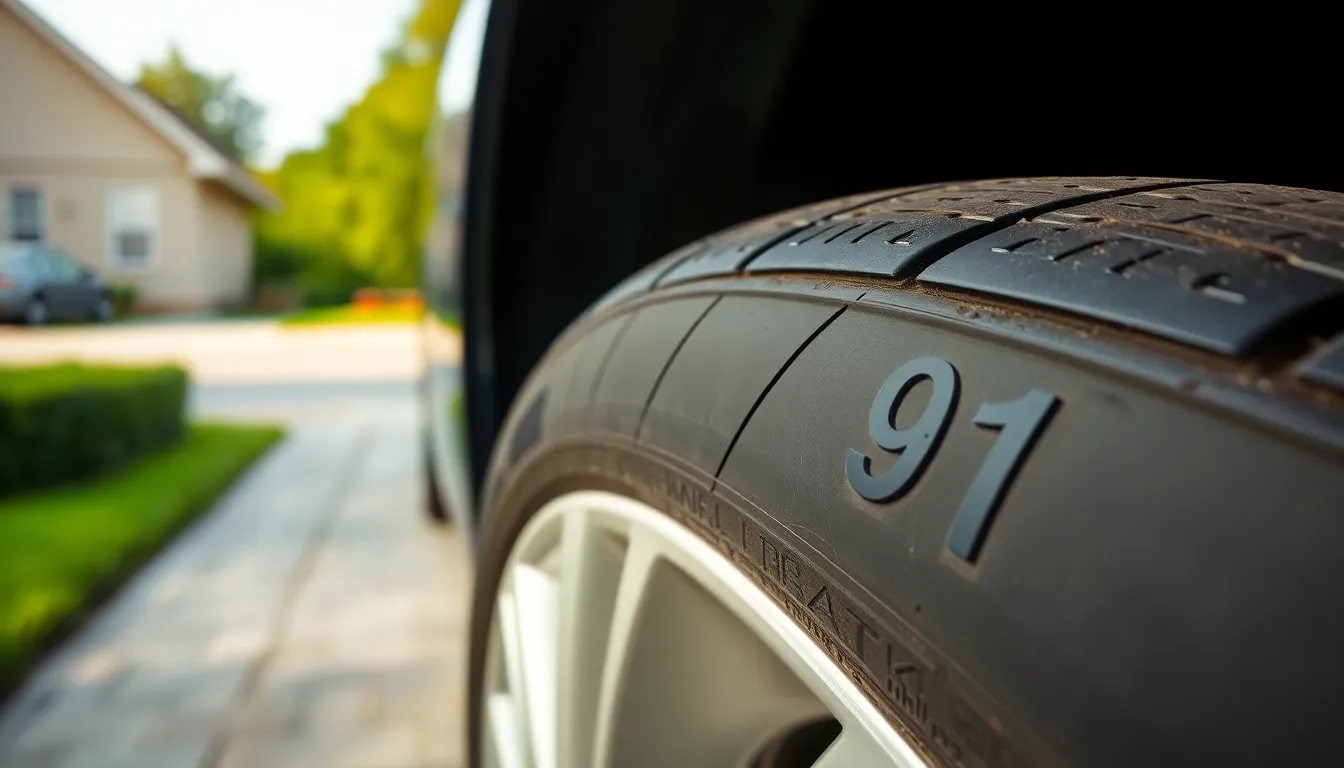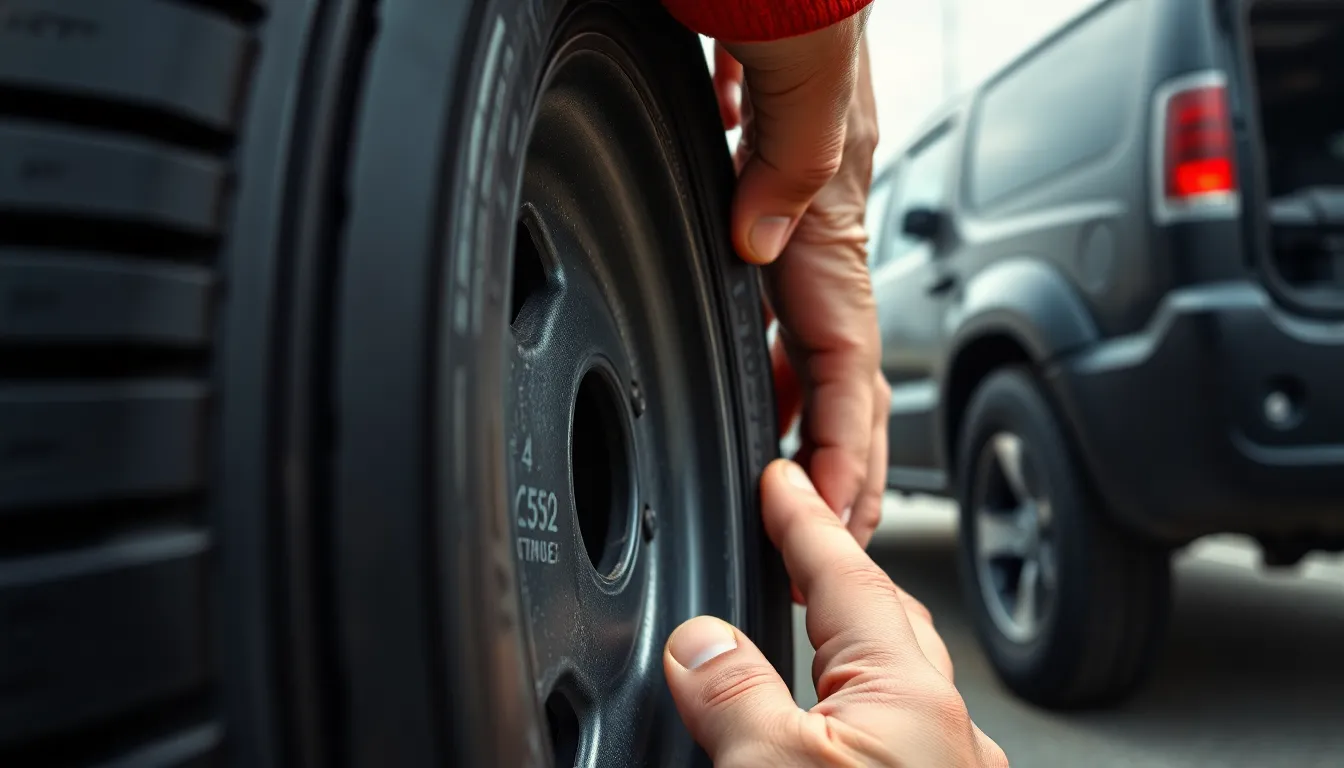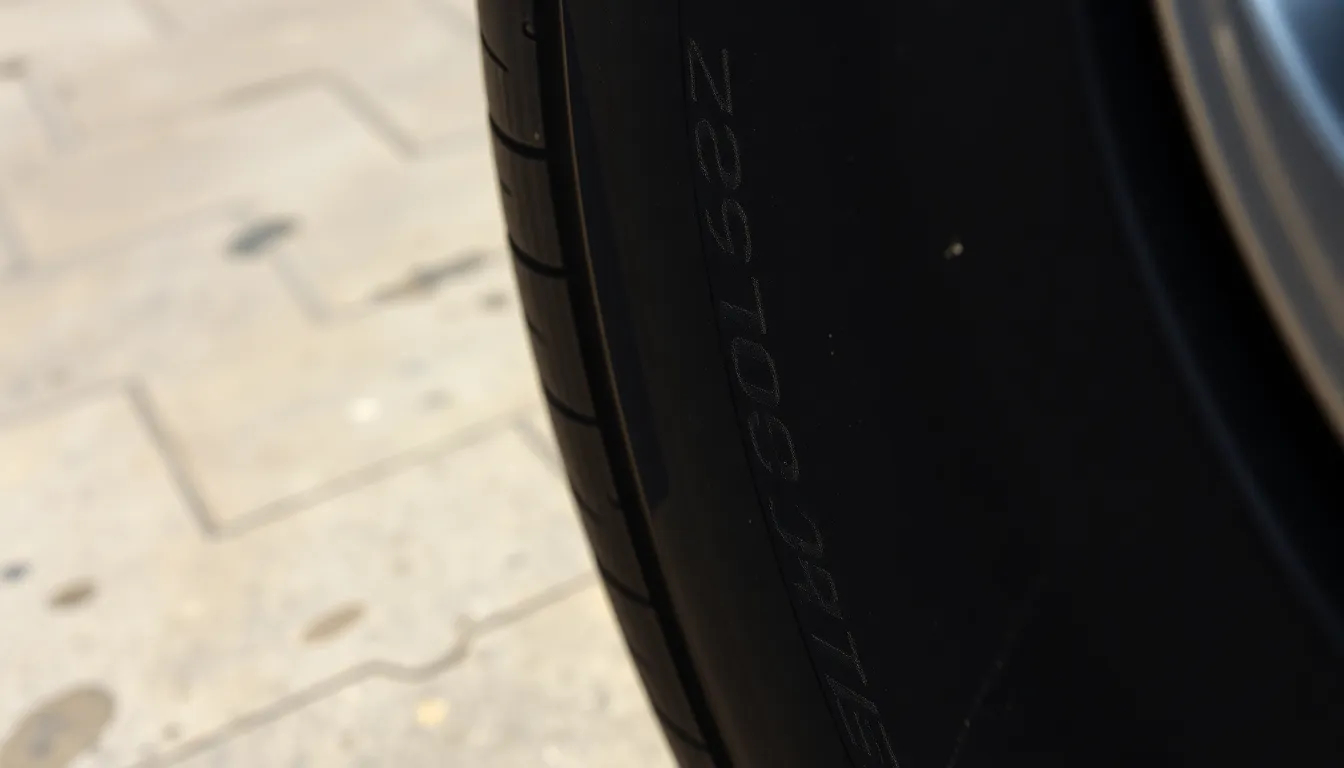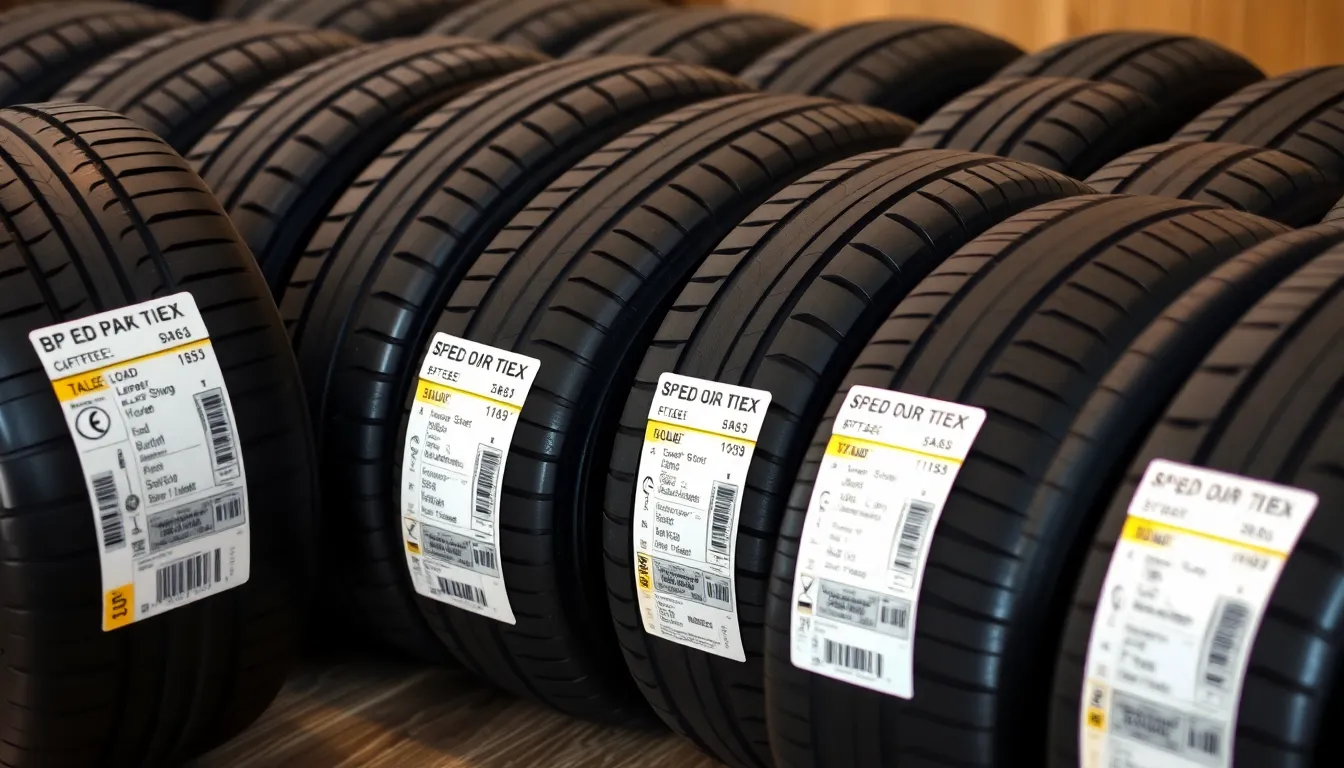Ever noticed those mysterious numbers and letters on your tire’s sidewall and wondered what they mean? If you’ve spotted “91H” on your tires you’re not alone in questioning this cryptic code. These markings aren’t just random – they’re crucial safety information that directly impacts your vehicle’s performance and your safety on the road.
The “91H” designation is part of your tire’s load index and speed rating system. While it might look like automotive hieroglyphics this code tells you exactly how much weight your tire can safely carry and the maximum speed it’s designed to handle. Understanding these markings isn’t just helpful – it’s essential for making informed decisions about tire replacement and ensuring you’re driving safely.
We’ll break down exactly what 91H means why it matters for your vehicle and how to use this information when shopping for new tires. Let’s decode this tire mystery once and for all.
What Does 91H Mean on a Tire?
The 91H designation on your tire represents two distinct performance specifications that manufacturers embed in the tire’s sidewall code. We decode this marking by separating it into two components: the load index (91) and the speed rating (H).
Load index 91 indicates the maximum weight capacity each tire can safely support. This exact rating translates to 1,356 pounds per tire according to standardized load index charts established by the Tire and Rim Association. Your vehicle’s total weight distribution relies on this capacity across all four tires.
Speed rating H designates the maximum sustained speed your tire can handle safely under optimal conditions. The H rating corresponds to speeds up to 130 mph (210 km/h) based on controlled laboratory testing standards. Tire engineers determine this rating through rigorous high-speed endurance tests that simulate real-industry driving conditions.
| Component | Value | Specification |
|---|---|---|
| Load Index | 91 | 1,356 lbs per tire |
| Speed Rating | H | Up to 130 mph |
| Combined Code | 91H | Load and speed designation |
Manufacturers position these codes on the tire sidewall alongside other vital information including tire size dimensions and construction details. We find the 91H marking typically appears after the tire size notation in a sequence like “225/60R16 91H” where each element provides exact technical data.
Automotive engineers developed this standardized system to ensure drivers can match tire capabilities with their vehicle’s requirements. The load index scale ranges from 75 (853 lbs) to 105 (2,039 lbs) for passenger vehicles while speed ratings span from L (75 mph) to Y (186 mph) covering various performance categories.
Understanding these specifications becomes critical when replacing tires since using incorrect ratings can compromise vehicle safety and performance. We recommend matching or exceeding the original equipment manufacturer’s specified ratings to maintain optimal handling characteristics and safety margins.
Understanding Tire Load Index Numbers

Load index numbers represent the maximum weight each tire can safely support when properly inflated. These standardized numerical codes appear directly before the speed rating letter on your tire sidewall.
The Number 91 Explained
The number 91 indicates a exact load carrying capacity of 1,356 pounds per tire. This load index rating establishes the maximum weight threshold for safe tire operation under normal driving conditions. Manufacturers test tires at maximum inflation pressure to determine these load ratings. The 91 load index falls within the mid-range category for passenger vehicle tires. Each load index number corresponds to a precise weight limit established by tire industry standards.
Load Index Chart and Weight Capacity
Load index values range from 75 to 105 for most passenger vehicles, with each number representing increasingly higher weight capacities. We’ve compiled the most common load index ratings and their corresponding weight limits:
| Load Index | Weight Capacity (lbs) | Load Index | Weight Capacity (lbs) |
|---|---|---|---|
| 85 | 1,135 | 93 | 1,433 |
| 87 | 1,201 | 95 | 1,521 |
| 89 | 1,279 | 97 | 1,609 |
| 91 | 1,356 | 99 | 1,709 |
Load index 91 positions itself as a standard rating for mid-size sedans and compact SUVs. Vehicles with higher gross vehicle weight ratings require load indexes above 91 for safe operation. Exceeding the load index capacity compromises tire integrity and vehicle safety. Selecting tires with load indexes equal to or higher than your vehicle’s original equipment ensures proper weight distribution and handling characteristics.
Decoding the Speed Rating Letter H

The letter H in tire markings represents a exact speed classification that determines the maximum sustained velocity a tire can handle safely. We decode this rating system to understand performance capabilities and safety limitations for vehicle operation.
Speed Rating Categories
Speed rating letters follow alphabetical progression with exact velocity thresholds for tire performance standards. We categorize these ratings from slowest to fastest capabilities across different vehicle types.
| Speed Rating | Maximum Speed (mph) | Maximum Speed (km/h) | Common Applications |
|---|---|---|---|
| L | 75 | 120 | Light truck tires |
| M | 81 | 130 | Temporary spare tires |
| N | 87 | 140 | Commercial vehicles |
| P | 93 | 150 | Light truck applications |
| Q | 99 | 160 | Winter tires |
| R | 106 | 170 | Light truck tires |
| S | 112 | 180 | Family sedans |
| T | 118 | 190 | Compact cars |
| U | 124 | 200 | Sedan applications |
| H | 130 | 210 | Sport sedans |
| V | 149 | 240 | Sports cars |
| W | 168 | 270 | High performance vehicles |
| Y | 186 | 300 | Ultra high performance tires |
Each rating category accommodates exact vehicle types and driving conditions based on engineering specifications. Manufacturers design these classifications to match vehicle capabilities with appropriate tire performance characteristics.
Maximum Safe Speed for H-Rated Tires
H rated tires maintain structural integrity at sustained speeds up to 130 mph under optimal driving conditions. We recognize this speed threshold as the maximum continuous velocity these tires can handle without compromising safety margins.
Operating above the H rating speed limit creates excessive heat buildup within tire components. Tire manufacturers engineer H rated products for sport sedans and performance oriented passenger vehicles that require enhanced speed capabilities beyond standard passenger car requirements.
Temperature management becomes critical when approaching maximum speed ratings since heat generation increases exponentially with velocity. We observe that sustained high speed operation reduces tire lifespan and affects handling characteristics even within the rated speed range.
Safety margins exist below the maximum rated speed to account for real industry driving variables including road surface conditions and ambient temperatures. Professional testing establishes these speed ratings under controlled laboratory conditions with proper tire inflation and optimal environmental factors.
Why Load Index and Speed Rating Matter

Load index and speed rating directly affect your vehicle’s safety and performance capabilities. Understanding these tire specifications prevents potentially dangerous situations and ensures optimal driving experiences.
Safety Implications
Exceeding a tire’s load capacity creates catastrophic failure risks that endanger passengers and other drivers. Overloaded tires generate excessive heat buildup leading to blowouts at highway speeds. We’ve documented cases where vehicles carrying loads beyond their 91 load index rating experienced sudden tire delamination during normal driving conditions.
Underrated speed capabilities pose equally serious threats when drivers unknowingly exceed their tire’s design limits. H-rated tires maintain structural integrity up to 130 mph, but sustained speeds beyond this threshold cause rapid deterioration of tire compounds. Emergency maneuvers become compromised when tires operate outside their engineered parameters.
Insurance companies often deny claims involving accidents caused by improper tire specifications. Vehicle manufacturers specify minimum load index and speed rating requirements for legal and safety compliance reasons. Installing tires below these specifications voids warranties and creates liability issues during accidents.
Vehicle Performance Impact
Properly matched tire specifications optimize handling characteristics and fuel efficiency throughout various driving conditions. Vehicles equipped with correct 91H rated tires demonstrate predictable steering response and stable braking performance during emergency situations. Mismatched specifications create uneven wear patterns that reduce tire lifespan by 30-40%.
Acceleration capabilities diminish when load ratings exceed actual vehicle requirements, as heavier tire construction increases rotational mass. Speed rating mismatches affect cornering stability particularly during highway merging and lane changes. We observe improved stopping distances when tire specifications align with manufacturer recommendations.
Suspension components experience additional stress when tire load capacities don’t match vehicle weight distribution. Electronic stability systems rely on consistent tire performance characteristics to function effectively. Upgrading to higher rated tires often improves overall vehicle dynamics without compromising safety margins.
How to Find Your Tire’s Load Index and Speed Rating

We can locate tire load index and speed rating information directly on the tire sidewall where manufacturers print these specifications alongside other essential tire data. The alphanumeric code appears after the tire size designation and includes both the load index number and speed rating letter.
Reading the Tire Sidewall
Tire sidewalls display information in a standardized format that includes size dimensions followed by the load index and speed rating combination. We examine the sequence of numbers and letters printed on the sidewall to identify the exact markings. A typical example shows “225/60R16 91H” where 91 represents the load index and H indicates the speed rating.
The load index number appears immediately after the tire size information and consists of two or three digits ranging from 71 to 126 for passenger vehicles. Speed rating letters follow the load index number and use alphabetical designations from L through Y with exact performance thresholds.
Common Tire Marking Locations
Sidewall markings appear on both the inner and outer sides of tires though the outer sidewall typically provides the most visible and complete information. We find these specifications printed in raised lettering or molded into the rubber compound for permanent identification.
Manufacturers position load index and speed rating codes consistently across all tire brands making identification straightforward once we understand the format. The markings remain legible throughout the tire’s service life unless excessive wear or damage obscures the sidewall text.
Using Online Resources and Apps
Digital tire identification tools help verify load index and speed rating specifications when sidewall markings become difficult to read. We can input tire size information into manufacturer websites or mobile applications to confirm the correct ratings for exact tire models.
Many tire retailer websites include lookup features that display load capacity and speed ratings based on vehicle year make and model information. These resources provide additional confirmation beyond sidewall inspection and help ensure accurate specification matching.
Consulting Vehicle Documentation
Owner’s manuals contain original equipment tire specifications including the required load index and speed rating for each vehicle. We reference these documents to confirm proper replacement tire ratings and avoid installing inadequate specifications.
Vehicle door jamb stickers also display recommended tire information including size and performance ratings. Certification labels provide manufacturer approved specifications that serve as the baseline for replacement tire selection ensuring compliance with safety standards.
Choosing the Right Tire Specifications for Your Vehicle

Selecting proper tire specifications ensures optimal vehicle performance and maintains manufacturer safety standards. We base our tire choices on exact vehicle requirements and driving conditions to maximize both safety and performance.
Manufacturer Recommendations
Vehicle manufacturers determine load index and speed rating requirements through extensive testing and engineering analysis. We find these specifications in multiple locations including the owner’s manual, driver’s side door jamb sticker, and fuel door placard. Original equipment specifications represent the minimum safety standards for your exact vehicle model.
Matching or exceeding manufacturer recommendations maintains warranty coverage and ensures proper vehicle dynamics. We verify that replacement tires meet or surpass the original load index of 91 and speed rating of H to preserve handling characteristics. Insurance companies may deny claims if accidents result from using underrated tire specifications.
Tire manufacturers design replacement options that often exceed original equipment standards. We can safely choose tires with higher load indexes like 95 or speed ratings like V without compromising vehicle performance. Premium tire lines frequently offer enhanced specifications that improve safety margins during extreme driving conditions.
When to Upgrade or Downgrade
Upgrading tire specifications becomes necessary when vehicle modifications increase weight or performance demands. We select higher load index ratings when adding heavy accessories like roof racks, trailer hitches, or cargo systems. Performance modifications requiring sustained high speeds warrant upgrading from H rated tires to V or W rated options.
Downgrading tire specifications compromises safety and violates manufacturer guidelines in most circumstances. We avoid reducing load index ratings below the original 91 specification even for cost savings. Lower speed ratings than H create dangerous situations during emergency maneuvers or highway driving.
Climate considerations influence tire specification choices for seasonal applications. We maintain original load index requirements but may select different speed ratings for winter tires based on regional driving conditions. All season tires typically maintain both 91 load index and H speed rating year round for consistent performance.
Commercial applications require upgraded specifications when transitioning from passenger to commercial vehicle use. We calculate total vehicle weight including cargo and passengers to determine appropriate load index increases. Fleet operators often specify higher ratings to accommodate varying load conditions across multiple vehicles.
Common Tire Code Examples and Comparisons

Different tire specifications appear across various vehicle types, helping us understand how 91H relates to other common ratings. Standard passenger vehicles typically use tire codes like 205/55R16 89H or 225/60R17 99H, placing the 91H rating in the mid-range category for load capacity.
| Tire Size | Load Index | Speed Rating | Max Load (lbs) | Max Speed (mph) | Vehicle Type |
|---|---|---|---|---|---|
| 185/65R15 88H | 88 | H | 1,235 | 130 | Compact Car |
| 205/55R16 91H | 91 | H | 1,356 | 130 | Sedan |
| 225/60R17 99H | 99 | H | 1,709 | 130 | SUV/Crossover |
| 235/45R18 94V | 94 | V | 1,477 | 149 | Sport Sedan |
| 265/70R17 115T | 115 | T | 2,679 | 118 | Light Truck |
Performance vehicles often feature higher speed ratings while maintaining similar load capacities. Tires marked 91V carry the same 1,356-pound load capacity as 91H tires but support speeds up to 149 mph instead of 130 mph. Sports cars frequently use 91W or 91Y ratings, extending maximum speeds to 168 mph and 186 mph respectively.
Commercial applications require significantly higher load indexes even though similar speed limitations. Light trucks and vans commonly use ratings like 116/113R, indicating load capacities exceeding 2,750 pounds per tire with speed restrictions of 106 mph. These specifications accommodate heavier cargo loads while maintaining appropriate safety margins.
SUV and crossover vehicles typically employ load indexes ranging from 95 to 105, translating to weight capacities between 1,521 and 2,039 pounds per tire. Popular configurations include 235/65R17 104H for mid-size SUVs and 245/60R18 105H for larger models, demonstrating how vehicle weight directly influences required load specifications.
Seasonal tire applications maintain consistent load indexes while adjusting tread patterns and rubber compounds. Winter tires marked 91H provide identical load and speed capabilities as their all-season counterparts, ensuring year-round performance consistency. All-terrain tires for light-duty trucks often feature 91S ratings, reducing maximum speeds to 112 mph while maintaining the same 1,356-pound load capacity.
Comparing 91H specifications against neighboring ratings reveals incremental capacity differences. Load index 90 supports 1,323 pounds while index 92 handles 1,389 pounds, creating 33-pound increments between consecutive ratings. These small variations become important when calculated across all four tires, affecting total vehicle payload by 132 pounds between adjacent load indexes.
Conclusion
Understanding what 91H means on your tire ensures you’re making informed decisions about vehicle safety and performance. We’ve shown you how to decode these essential markings and why they matter for your driving experience.
When replacing tires remember that matching or exceeding your vehicle’s original specifications isn’t just recommended—it’s crucial for maintaining optimal handling and safety margins. The 91H rating represents a reliable mid-range option suitable for many passenger vehicles.
Armed with this knowledge you can confidently navigate tire purchases and ensure your vehicle performs as intended. Always consult your owner’s manual or door jamb sticker to verify the correct specifications for your exact vehicle before making any tire-related decisions.
Frequently Asked Questions
What does 91H mean on a tire?
The “91H” marking on a tire represents two important specifications: the load index (91) and speed rating (H). The number 91 indicates the tire can safely carry up to 1,356 pounds when properly inflated. The letter H means the tire is rated for sustained speeds up to 130 mph under optimal conditions.
Where can I find the 91H marking on my tire?
The 91H marking is printed directly on the tire’s sidewall, typically on the outer side for easy visibility. It appears as part of a standardized format like “225/60R16 91H” alongside other tire specifications. You can also find this information in your vehicle’s owner’s manual or on the door jamb sticker.
Is 91H a good tire rating for my car?
The 91H rating is considered mid-range and suitable for most passenger vehicles, sport sedans, and performance-oriented cars. Whether it’s appropriate for your vehicle depends on your manufacturer’s specifications. Always match or exceed the original equipment ratings specified in your owner’s manual for optimal safety and performance.
Can I replace 91H tires with a different rating?
You can upgrade to higher load index or speed ratings (like 94H or 91V), but never downgrade below your vehicle manufacturer’s specifications. Using lower ratings than recommended can compromise safety, void warranties, and potentially lead to insurance claim denials if accidents occur due to improper tire specifications.
What happens if I exceed the 91H tire’s load capacity?
Exceeding the 1,356-pound load capacity of a 91H tire can lead to catastrophic tire failure, including blowouts and loss of vehicle control. Overloading causes excessive heat buildup, accelerated wear, and structural damage. Always ensure your vehicle’s weight, including passengers and cargo, stays within the tire’s rated capacity.
How does the H speed rating compare to other ratings?
The H speed rating (130 mph) falls in the middle range of tire speed ratings. It’s higher than S (112 mph) and T (118 mph) ratings commonly found on standard passenger cars, but lower than V (149 mph) and W (168 mph) ratings used on high-performance vehicles.

